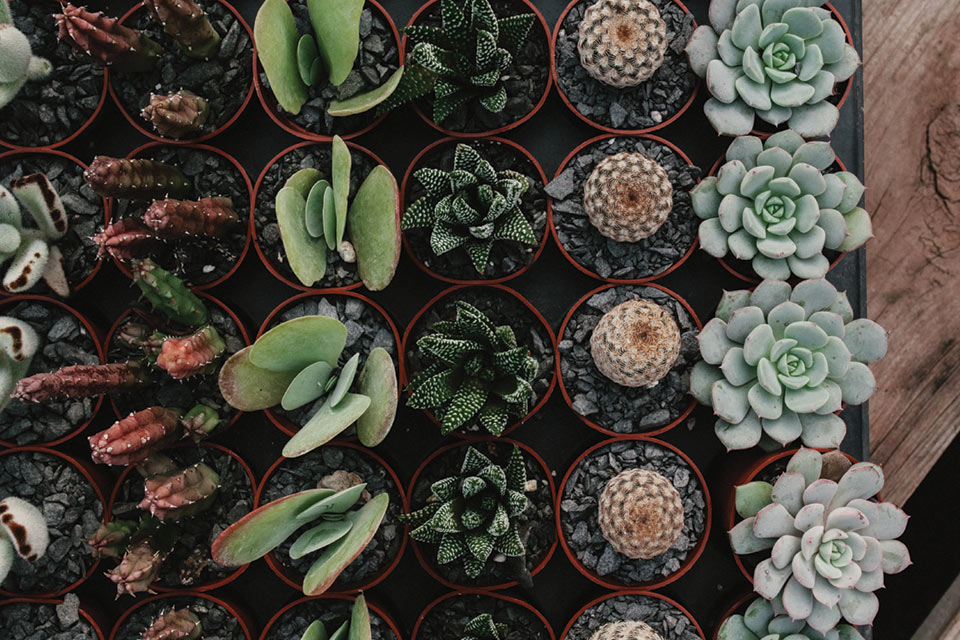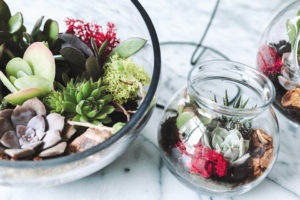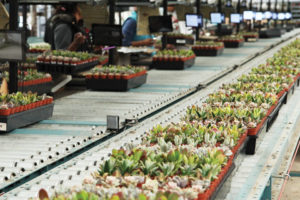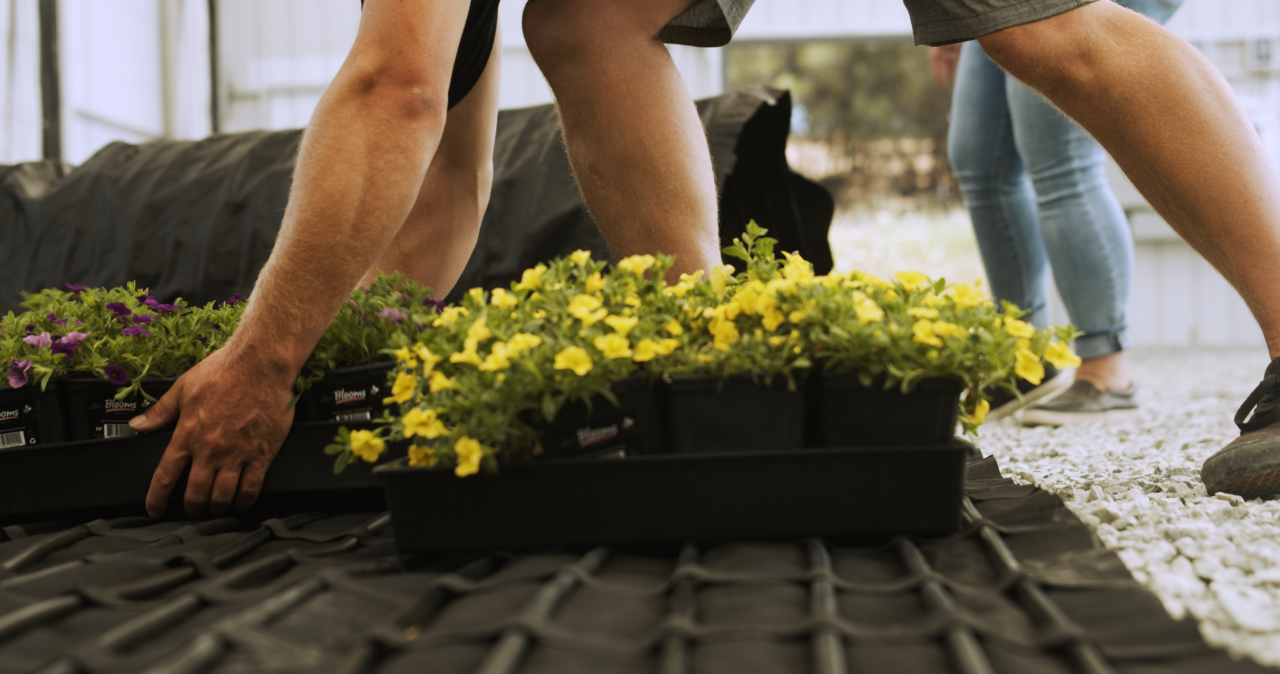Why ArizonaEast Is Expanding Its Succulent Production To Florida
 Brian and Joe Vitale’s father, Dan, first started growing succulents in New Jersey in the 1970s, selling them primarily to garden centers. After each brother went to college, and then got jobs in the corporate world, they eventually looked back to their roots, realized the growing opportunities in the succulent market, and decided it was time to get back in the game.
Brian and Joe Vitale’s father, Dan, first started growing succulents in New Jersey in the 1970s, selling them primarily to garden centers. After each brother went to college, and then got jobs in the corporate world, they eventually looked back to their roots, realized the growing opportunities in the succulent market, and decided it was time to get back in the game.
When the two of them decided to carry on the family legacy of supplying succulents and cacti to consumers in New Jersey and the surrounding area, they certainly gave their new company a fitting name: ArizonaEast. However, since founding the company in 2005, they have rapidly expanded on this mission, and now find themselves venturing into new geographies and new markets, learning a lot along the way.
When they launched ArizonaEast, their immediate goal was to diversify their customer base.
“Over the last couple decades, a lot has changed in the garden center market,” says Brian Vitale, who handles much of the business management/strategy side of the company. “We saw supermarket and box-store chains getting more involved in the floral end of their business, which meant an opportunity to help us isolate our risk.”
The early returns were very successful.
“We managed to get new customers and diversify, and we also do a better job for the garden center customers we already had,” Brian says. “It’s helped both sides of our business.”
As it turns out, luck was on their side, as well.
“For the first 30 years that our dad was in business, succulents were still trying to find their way,” Brian says. “The market has caught on now, and we’re happy to have the built-in, hands-on experience. It’s paved the way for our growth.”
Taking Advantage Of A New Opportunity
This past October, the Vitale brothers made perhaps an even bigger move when they opened a second facility in Apopka, FL. According to Brian, there were three primary reasons they had for opening the new facility:
• A better growing environment. “There have always been a few succulent species such as euphorbias that just don’t do well in New Jersey,” Brian says. “We’ve retrofitted a few of our greenhouses to get by with that over the years, but ultimately this was a move for us to try and grow these plants in an environment where they actually do well on their own.” He says that taking advantage of Florida’s warm, humid environment, and particularly its milder nighttime temperatures, should help the company extend its plant offerings.
• Direct shipping and delivery to Southern markets. “We recently started pushing in to the South and Southeast markets, and we see the Apopka facility as a good opportunity for us down the road as a second ship point so we are producing product in both locations rather than sending them down from New Jersey,” Brian says. “It also gives us a nice selling point for customers down there who want to buy local. They can buy from us and still achieve that goal.”
• Apopka offered an opportunity for a new location, leased at a reasonable price. According to Brian, industry consolidation and the recession in the mid-2000s knocked many smaller growers out of the market, which led to a huge amount of available greenhouse space.
“We were impressed at the cost differences, per square foot, of operating in New Jersey and other parts of Florida versus in Apopka,” Brian says.
The new facility features 110,000 square feet of gutter-connected greenhouse space, which more than doubles ArizonaEast’s 75,000 square feet of hoop houses in New Jersey.

Since founding ArizonaEast in 2005, brothers Brian and Joe Vitale have ventured into several new markets.
Longer Growing Season Offers More Advantages
The expansion into Florida has provided many mostly positive lessons about succulent production in different regions, Brian says.
“One big question we had when we moved to Apopka was, will we really be able to continue growing succulents throughout the growing season?” Brian says. “In New Jersey we only have a five- or six-month growing season, divided between spring and fall.”
In particular, Brian was eager to see how the plants would respond once they were in Florida. Fortunately, the early results have been positive.
“The first few batches of product on Florida benches are growing faster than what we get here in New Jersey in the spring,” Brian says. “We anticipate that we’ll have to shut the plants down a bit in January. But the winter in Florida is much shorter, so we think we’ll have a much longer growing season.”
Brian also notes that in addition to being gutter connected, the Florida greenhouse has a cooling system that runs the length of the western side of the building.
“Even though we have a long, hot summer, we are confident we can maintain the temperature and keep the plants from falling asleep. We hope to get 10 to 11 months of a growing season,” Brian says.
One big difference Brian has noticed between the two facilities is how the weather affects watering schedules.
“In New Jersey, we have to be careful about when we water the plant, and it comes down to constantly monitoring the weather,” Brian says. “If the forecast calls for three days of sun and you water the plants, but you end up with a day of clouds, you’d better expect some losses.”
While Florida is by no means as consistent as California when it comes to weather, there is much less seasonal change than in New Jersey, and the sunlight is more predictable.
When it comes to light levels, Brian says one of the challenges in New Jersey is that while plants are often happy with light levels in the summer, the seasonal change in the fall requires constant adjustments of shade fabric and lighting conditions.
“There’s really no effective way to control the heat in New Jersey,” Brian says. “Being gutter connected in Florida helps us control heat in the summer so we can get away with higher light levels because we have good air flow and fans keeping things cool.”

ArizonaEast could soon be adding more value-added products such as terrariums.
Will ArizonaEast Go West?
So what’s the next big move for ArizonaEast? Brian says one of the initial goals the company set back in 2005 was to eventually get to a point where it could offer a national program. Now that they’re halfway to that goal, the next wave of expansion will more than likely be a satellite operation on the West Coast.
“This would allow us to take advantage of another climate that might help us grow other things,” Brian says. “But we still need a year or two to get things going in the South, so that’s our first priority.”
Brian also notes that distribution continues to be a huge challenge.
“When you deal with supermarkets, no one wants to pay for freight; they want that built into the cost of the product, so we have to quote that up front,” Brian says. If you don’t do this, you may have to scramble to find another freight option at the last minute.
“One thing we did this year was hire a dispatcher whose primary job is to make sure that we shop around for freight. This is especially important in the new markets we are in. As we move product into more states, we need a way to get it there at a good rate so the customer is not the one bearing that cost, to the point where it impacts your competitiveness in a negative way compared to other growers who are more local in that market.”
How Rebranding Helps Target New Customers
In November, ArizonaEast went through a complete branding overhaul, which includes a new company logo, badge, and tagline. Key features of the new brand include a softer color palette and a less literal graphic icon that transcends the classic succulent shape to evoke craftsmanship, quality, and style.
“We’ve changed so much the past few years, and this is a nice way to show that evolution,” says Brie Genovese, Marketing Manager for ArizonaEast. “It’s a result of everything we’ve learned, and also a signal of the need for versatility and flexibility with our brand.”
Genovese says the company now has some great tools to help make sure everything they touch shows who they are and what they’re doing. It also allows for more flexibility so they don’t have to be focused exclusively on cacti and succulents.
“We’ve been doing a lot of product development and have had some requests for hard goods, and we wanted a way to have that flexibility if we decide to go in that direction,” Genovese says.
On a broader scale, Genovese says one of her main goals is to communicate to consumers that succulents are a low-maintenance plant that someone who isn’t a plant person can take care of successfully.
“We are also following trends and paying attention to what the thought leaders online and in social media are doing, and trying to translate that to our customers who might not be caught up to the fact that succulents are so popular now,” Genovese says. “We’ve changed our marketing approach to help our customers realize that succulents can be popular year round.”
The results have been very positive.
“We haven’t had a slow time yet this year,” she says.
 Investments In Technology
Investments In Technology
Joe Vitale, one of the co-owners of ArizonaEast, is an electrical engineer by trade. When the company’s new Apopka, FL, location was being planned, he knew automation was going to be an important part of the design.
“We knew we needed to get ahead of any of the issues that are associated with expanding before they arise,” Joe says.
Here’s a brief look at some of the innovations he added
• In the New Jersey facility, a fully automated conveyor room with work stations where the product is delivered to the employee, rather than the employee carting it around. An added benefit, Joe says, is that every work bench has a tablet computer where each employee can track productivity. Brian and Joe can then do cost calculations to determine the cost that is going into each item.
• In the Florida facility, a 360 degrees pan tilt zoom camera that broadcasts in high definition, allowing the Vitales to see their product from New Jersey.
“When you have a facility that’s several hundred miles away, you want to feel like you’re there and be able to see what the people there are seeing,” Joe says. The cameras can zoom in on a plant on a bench and determine if it has rot, insects, etc.
• A virtual reality camera where “we can walk through the facility, pause the video, and look around the room as if we’re there,” Joe says. “We can get a full picture of the whole facility, check inventory shelves, and make selective decisions about what’s going on a thousand miles away. It’s really impressive stuff.”









